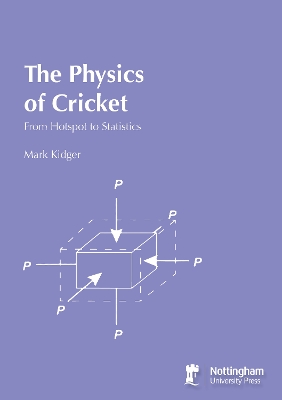Spin, swing, seam, irregular bounce, using the pace of the ball, Hawkeye - cricket is littered with technical terms and, increasingly, with technology. The Pakistani bowlers who, in the 1980s, discovered that under certain circumstances they could get the ball to swing through the air in the opposite sense to the way that all logic suggested (so-called "reverse swing") were actually applying fluid dynamics and the modification of airflow over a surface in a quite brilliant way, although probably ignorant of the hydrodynamical principals involved. When, appalled by the increasing degree of controversy that television replays were causing about the decisions of umpires, it was not a sportsman who was approached to help out, but the astronomer Sir Bernard Lovell, who made a study of how physics could help umpires to make the right decisions. Now fans around the world are used to seeing the infrared technology of "Hotspot", the acoustics of "Snicko" and the ballistics of "Hawkeye", but how many people actually understand how these aids work and what their applications and limitations are? Is there any scientific reason why a white ball should behave differently to a red one?
Why do we use a red or a white ball anyway? Cricket is also an eminently statistical sport. Statistics play a huge part in making and breaking careers, but the old adage that there are "lies, damn lies and statistics" tends to be forgotten by many people who use them without understanding how they work and who often try to force them to support conclusions that are beyond the weight that simple numbers can reasonably be expected to bear. This book will look at the science behind cricket - not just physics - explaining to the armchair fan and the sportsman alike how many different branches of science come together on a cricket field to produce the end result that is the game that we watch with such passion. This will be done in a way that should be understandable to the intelligent layman and to people with a basic grounding in science, but illustrative to people with a deeper understanding of the principles involved.
- ISBN10 1908062487
- ISBN13 9781908062482
- Publish Date 31 May 2011 (first published 1 May 2011)
- Publish Status Active
- Publish Country GB
- Imprint Nottingham University Press
- Format eBook
- Pages 190
- Language English
